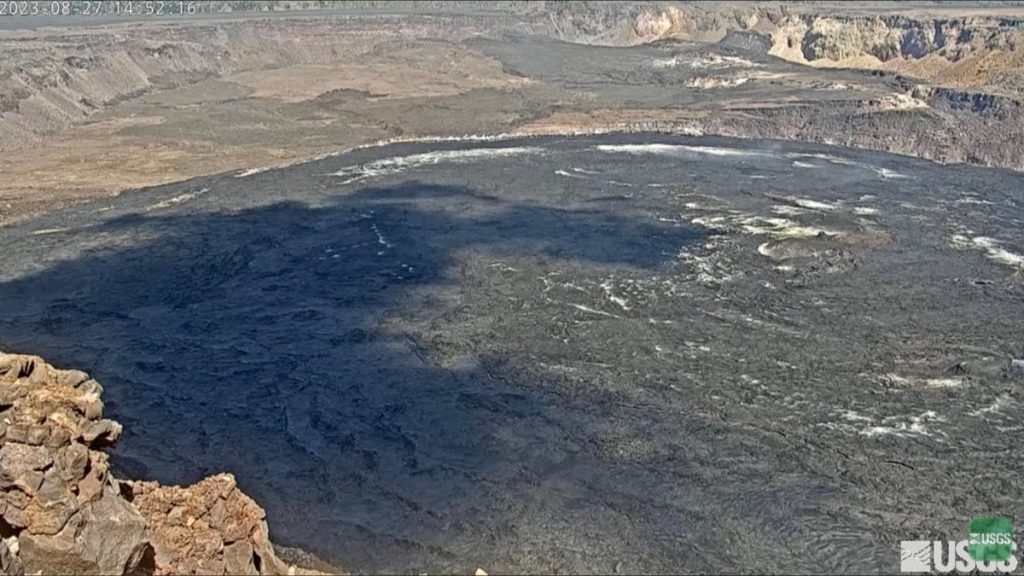Elevated unrest continues at Kīlauea summit, activity could escalate to an eruption

Kīlauea summit continues to show signs of elevated unrest. Elevated seismic activity, which is contained to the caldera, continued through the weekend with no eruption reported.
The activity, currently confined within Kīlauea’s summit region, could escalate to an eruption in the coming days, weeks, or months if it continues. The activity could also decrease due to intrusion of magma underground or other changes, resulting in no eruption. Furthermore, levels of activity are expected to rise and fall during this period.
Earthquake swarms have been rattling the summit for nearly week with none reported Saturday. According Hawaiian Volcano Obersvatory, the swarm activity is still concentrated in an area south for the summit caldera at depths of 1-2 miles below the surface, with no upward migration.
No unusual activity has been noted along Kilauea’s East Rift Zone or Southwest Rift zone.
Summit tiltmeters began to show inflationary tilt this morning, returning to the trend of high inflationary deformation that has been observed over the past several months. Sulfur dioxide emissions from the summit remain low; the most recent SO2 emission rate, of approximately 75 tonnes per day, was measured on Aug. 24.
The earthquake activity and tiltmeter data indicate that Kīlauea summit is becoming increasingly pressurized, according to Hawaiian Volcano Observatory. Similar episodes of earthquake and ground deformation activity occurred in November 2020 and August 2021, prior to eruptions in December 2020 and September 2021.
No active lava has been observed at Halema‘uma‘u crater since June 19. A live-stream video of the inactive western lava lake area is available at https://www.youtube.com/usgs/live.
No unusual activity has been noted along the East Rift Zone or Southwest Rift Zone; steady rates of ground deformation and seismicity continue along both. Measurements from continuous gas monitoring stations downwind of Puʻuʻōʻō in the middle East Rift Zone remain below detection limits for Sulfur Dioxide, indicating that SO2 emissions from Puʻuʻōʻō are negligible.
For discussion of Kīlauea hazards, see: https://www.usgs.gov/observatories/hawaiian-volcano-observatory/hazards. Visit the Hawaiʻi Volcanoes National Park website for visitor information at https://www.nps.gov/havo/index.htm.






